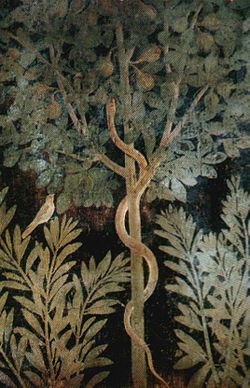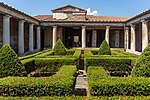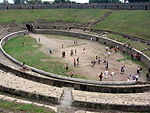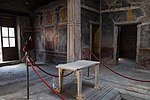Garden of the Fugitives
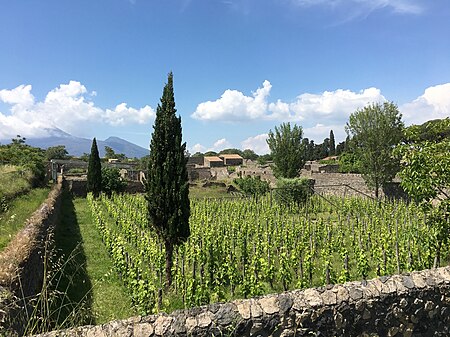
The Garden of the Fugitives (Italian: Orto dei Fuggiaschi) is an archaeological site located in the ancient destroyed city of Pompeii, in Regio 1 Insula 21. It contains the casts of 13 victims of the eruption of Mount Vesuvius in 79 AD.The insula once contained more town houses than the two which stand at the northwestern end of the insula but the rest of the area had been largely converted into a vegetable garden and vineyard before the eruption, with a triclinium covered by a pergola for outdoor banquets. The garden is situated near the Large Palaestra and just inside the Nocera gate. Today it has been extensively and carefully replanted to represent the original contents.The victims were adults and children, several found close together and others scattered over the area. They died apparently while trying to find a way out of the Nocera Gate, as they were above the layer of pumice that had already reached a height of 3.5 m, and were caught by the pyroclastic flow which was fatal.
Excerpt from the Wikipedia article Garden of the Fugitives (License: CC BY-SA 3.0, Authors, Images).Garden of the Fugitives
Via Colle San Bartolomeo,
Geographical coordinates (GPS) Address Nearby Places Show on map
Geographical coordinates (GPS)
| Latitude | Longitude |
|---|---|
| N 40.7496 ° | E 14.4926 ° |
Address
Via Colle San Bartolomeo
80045
Campania, Italy
Open on Google Maps


